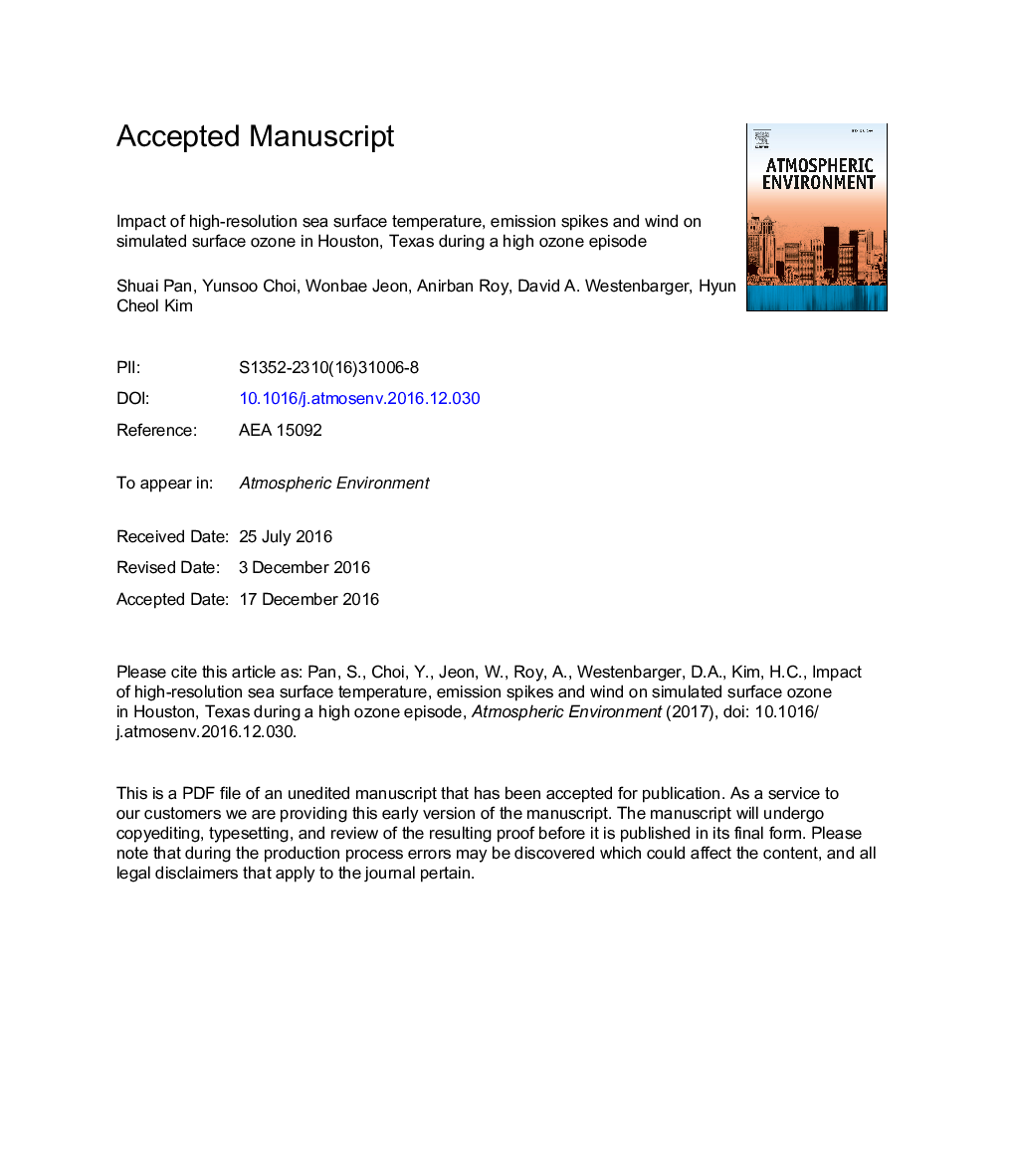| Article ID | Journal | Published Year | Pages | File Type |
|---|---|---|---|---|
| 5753414 | Atmospheric Environment | 2017 | 33 Pages |
Abstract
In order to investigate the additional sources of error, three sensitivity simulations were performed for the high ozone time period. These involved adjusted emissions, adjusted wind fields, and both adjusted emissions and winds. These scenarios were superimposed on the updated SST (SENS) case. Adjusting NOx and VOC emissions using simulated/observed ratios improved correlation and index of agreement (IOA) for NOx from 0.48 and 0.55 to 0.81 and 0.88 respectively, but still reported spatial misalignment of afternoon O3 hotspots. Adjusting wind fields to represent morning weak westerly winds and afternoon converging zone significantly mitigated under-estimation of the observed O3 peak. For example, simulations with adjusted wind fields and adjusted (emissions + wind fields) reduced under-estimation of the peak magnitude of 100 ppb from 50 ppb to 7 and 9 ppb. Additionally, these sensitivity cases captured the timing and location of the observed O3 hotspots. The simulation case with both adjusted emissions and wind fields showed the best statistics for NOx (correlation: 0.84; IOA: 0.90) and O3 (correlation: 0.87; IOA: 0.92). These comparisons suggest that emissions and wind fields are important in determining the magnitude of high peaks, and wind direction is more critical in determining their timing and location. Particularly, improving the model capability to reproduce small-scale meteorological conditions favoring O3 production, such as stagnation and wind reversal, is crucial for accurate placement of locations of peak O3 and its precursors.
Keywords
Related Topics
Physical Sciences and Engineering
Earth and Planetary Sciences
Atmospheric Science
Authors
Shuai Pan, Yunsoo Choi, Wonbae Jeon, Anirban Roy, David A. Westenbarger, Hyun Cheol Kim,
